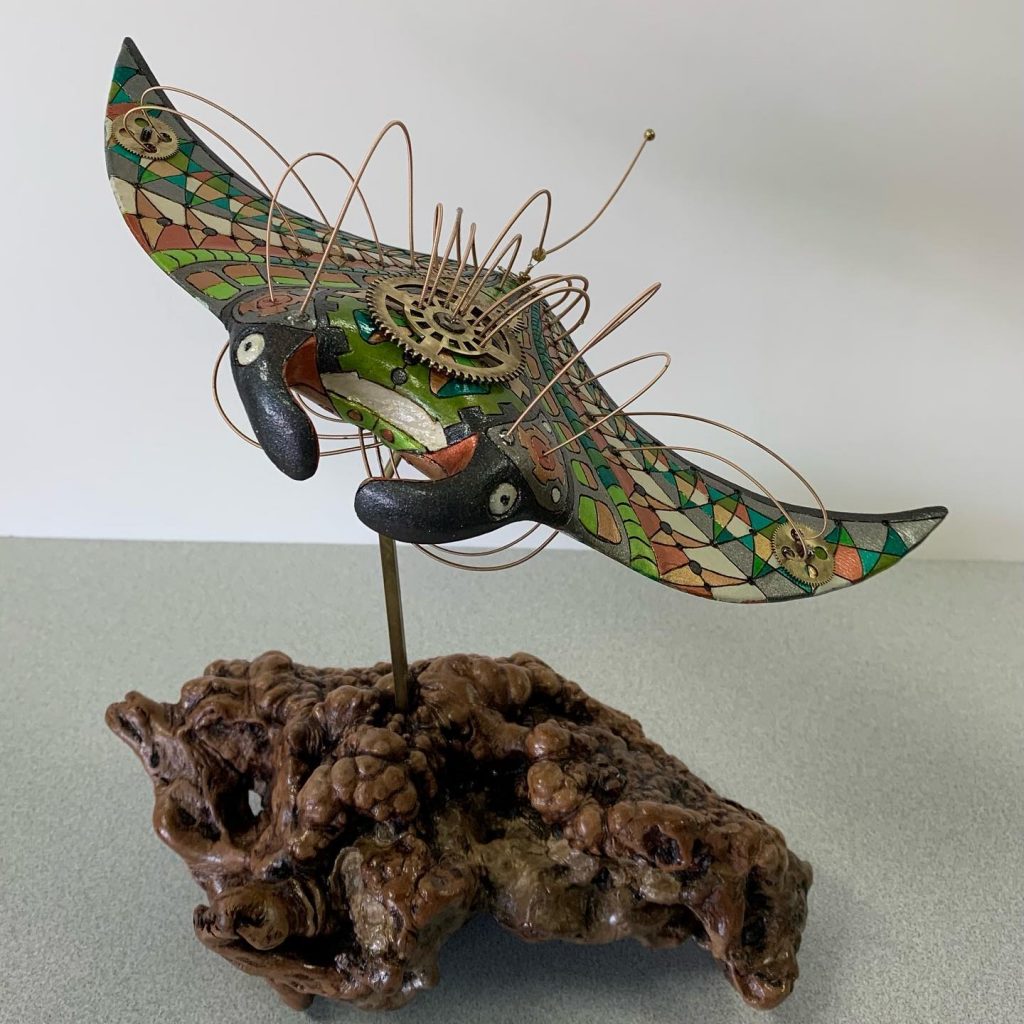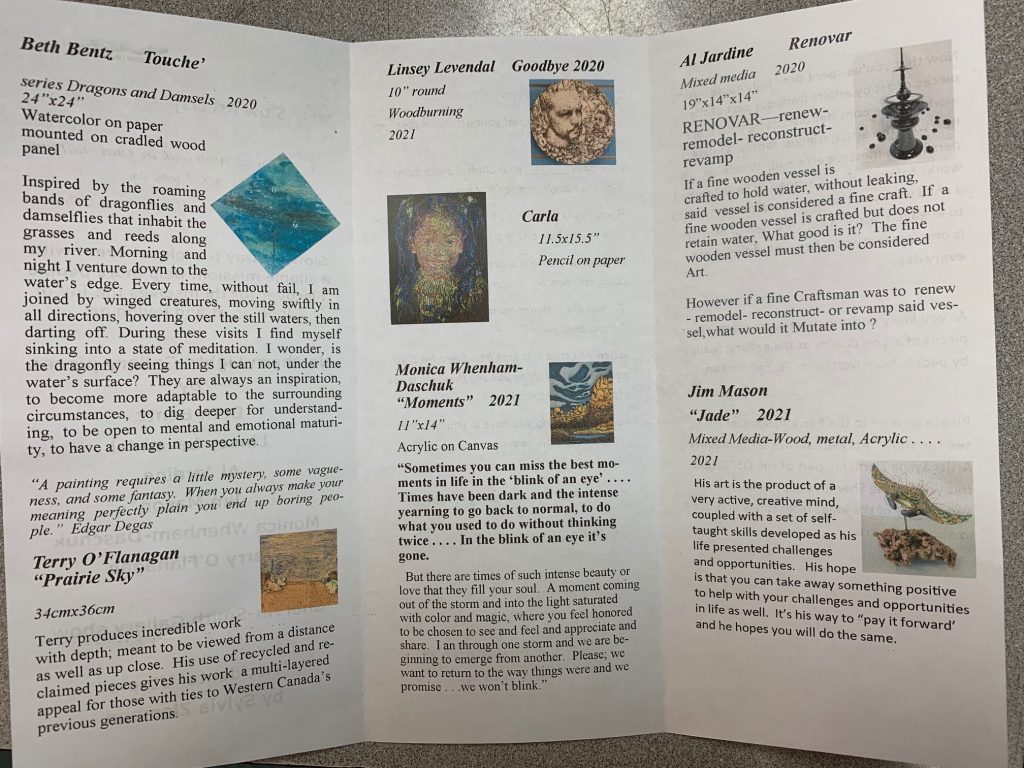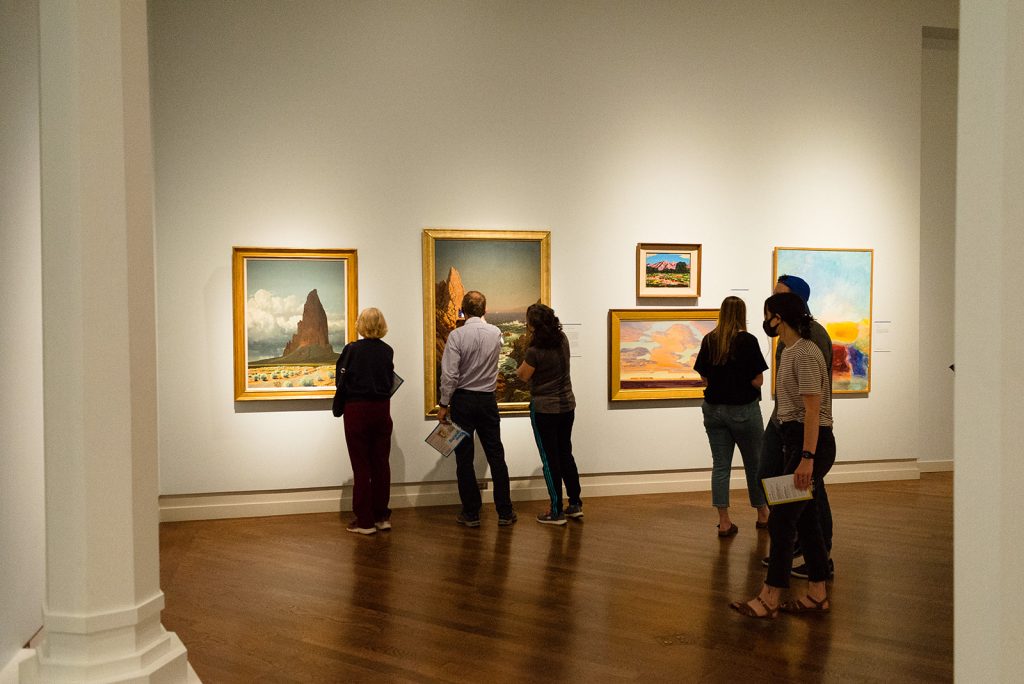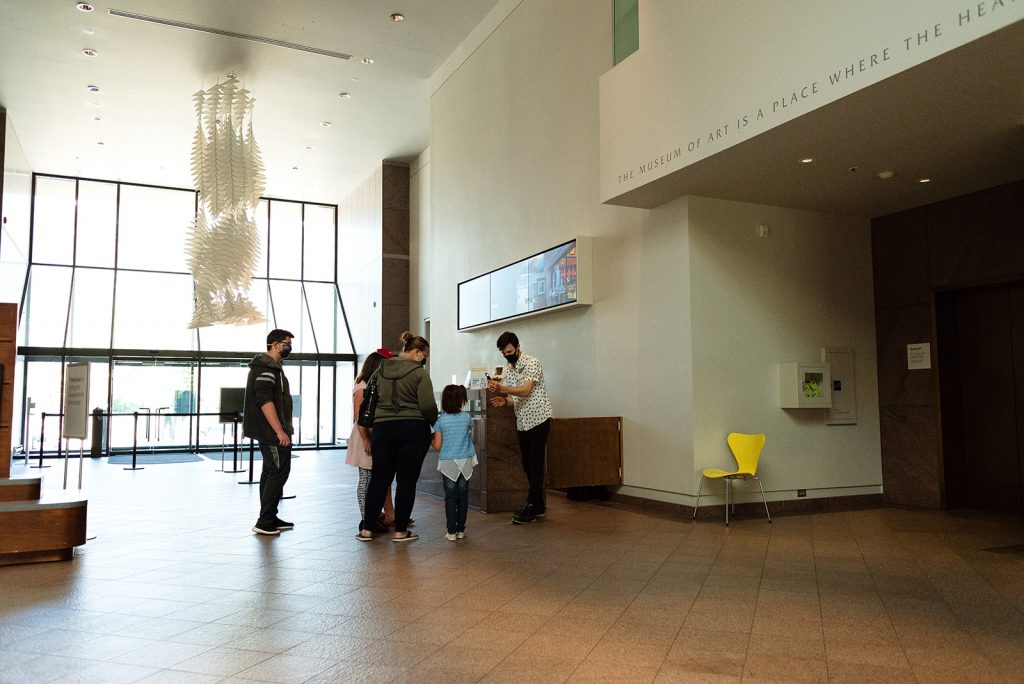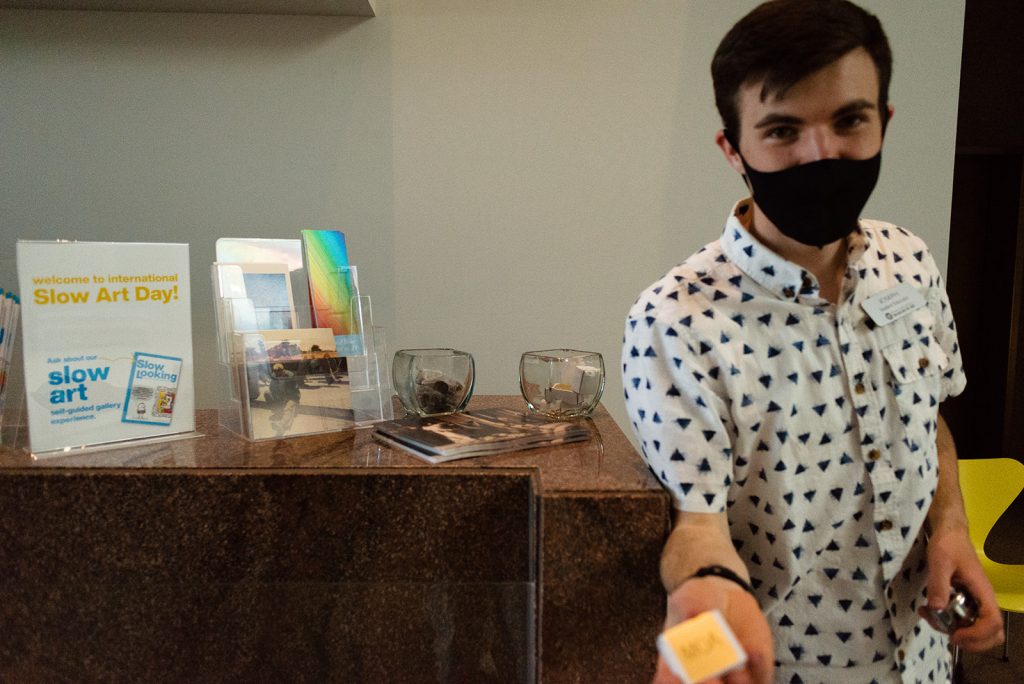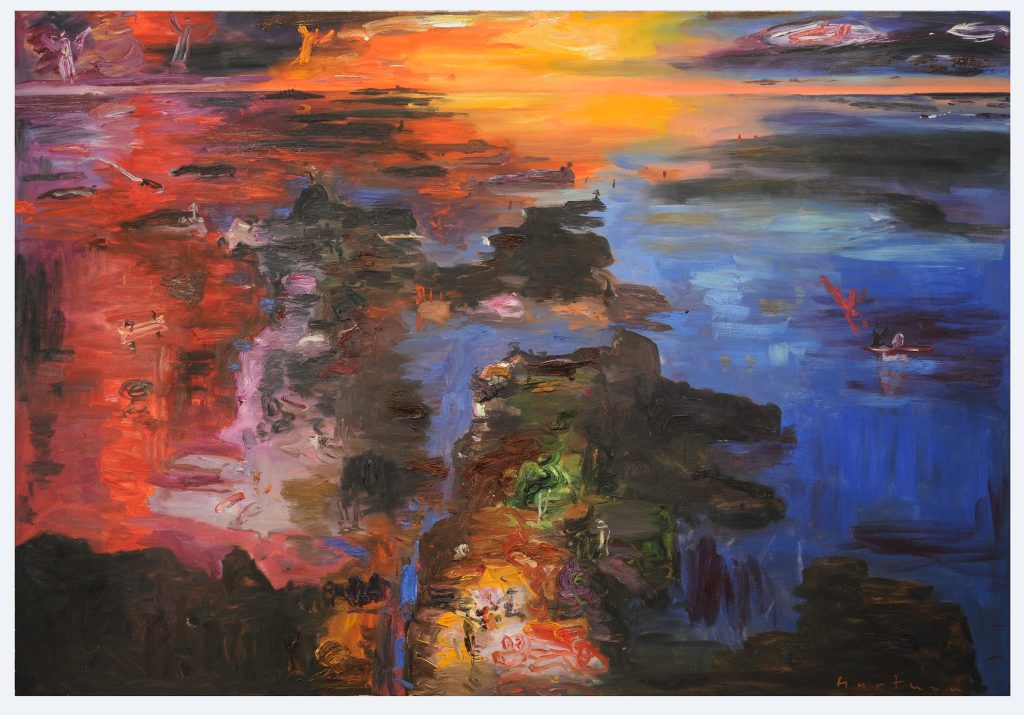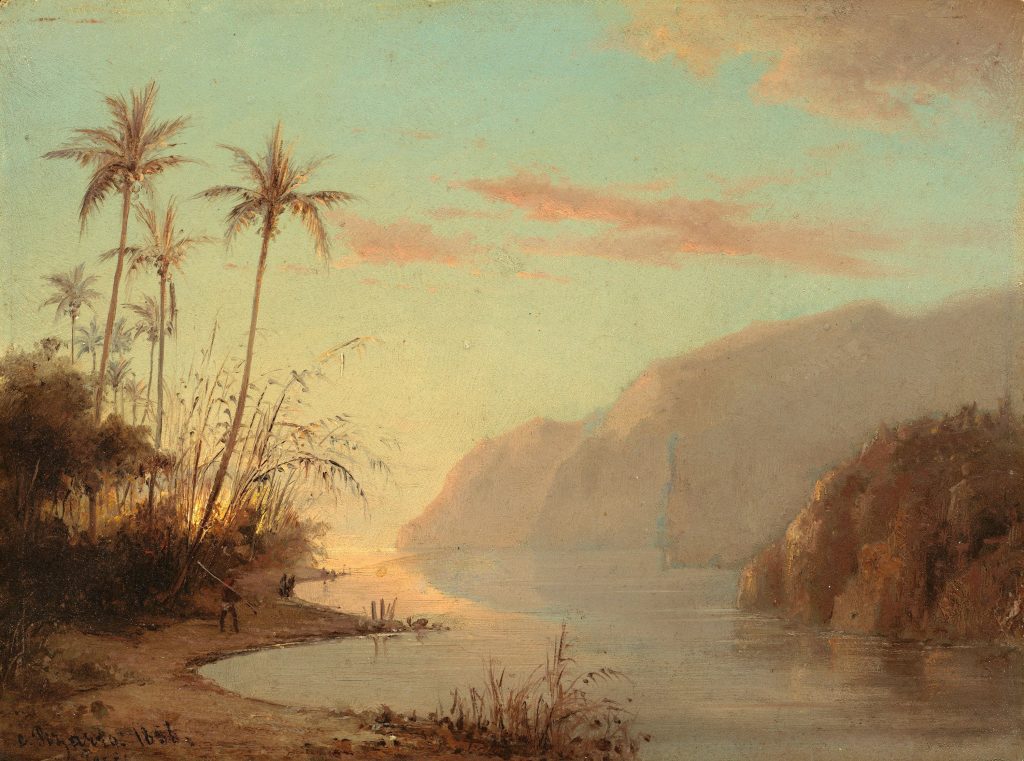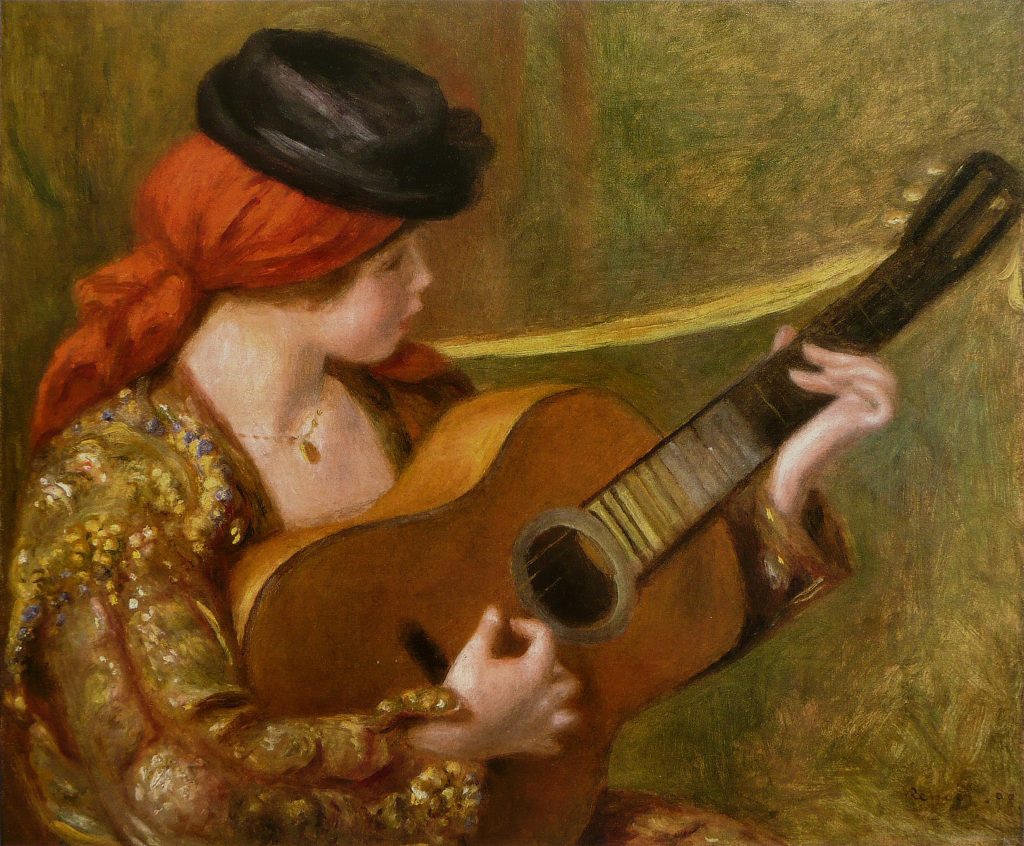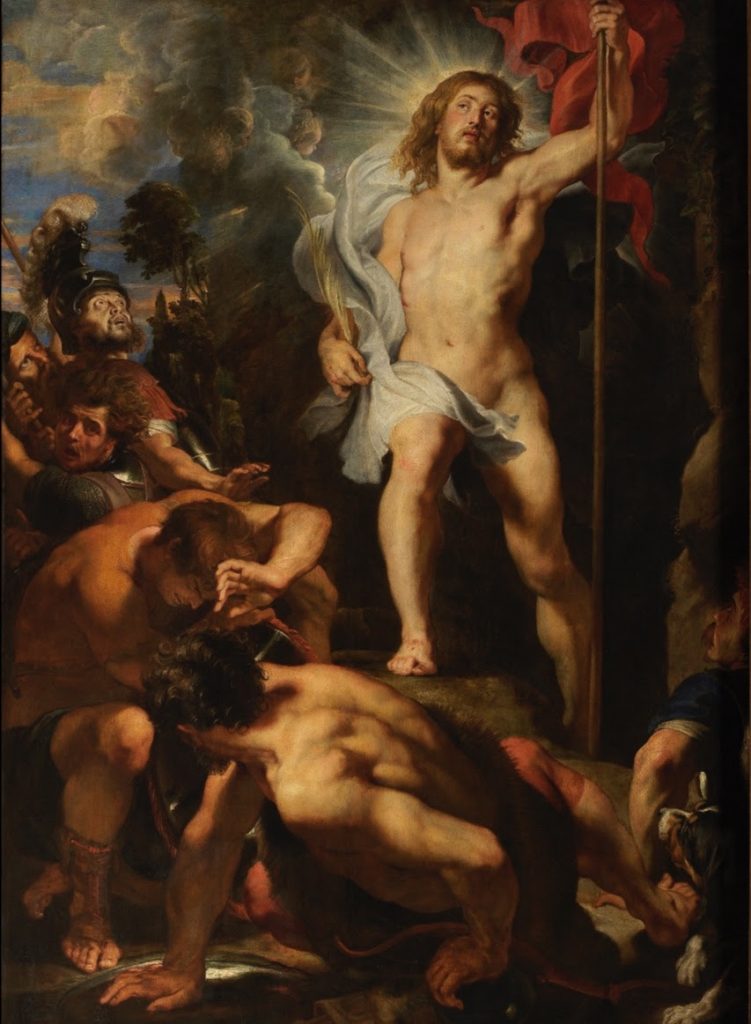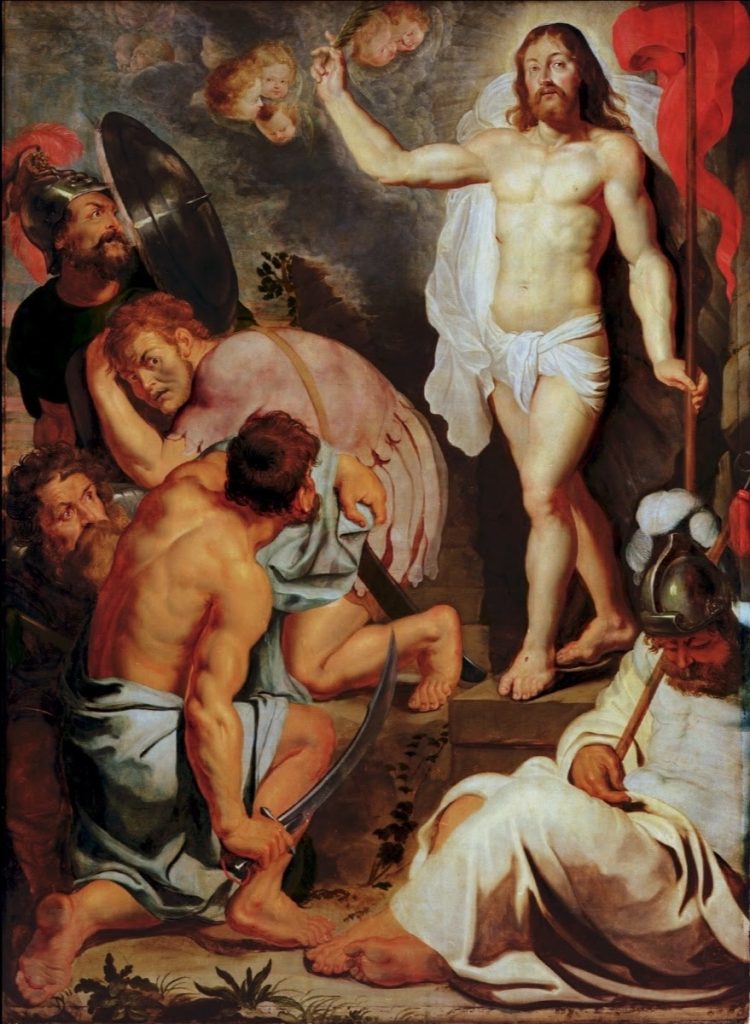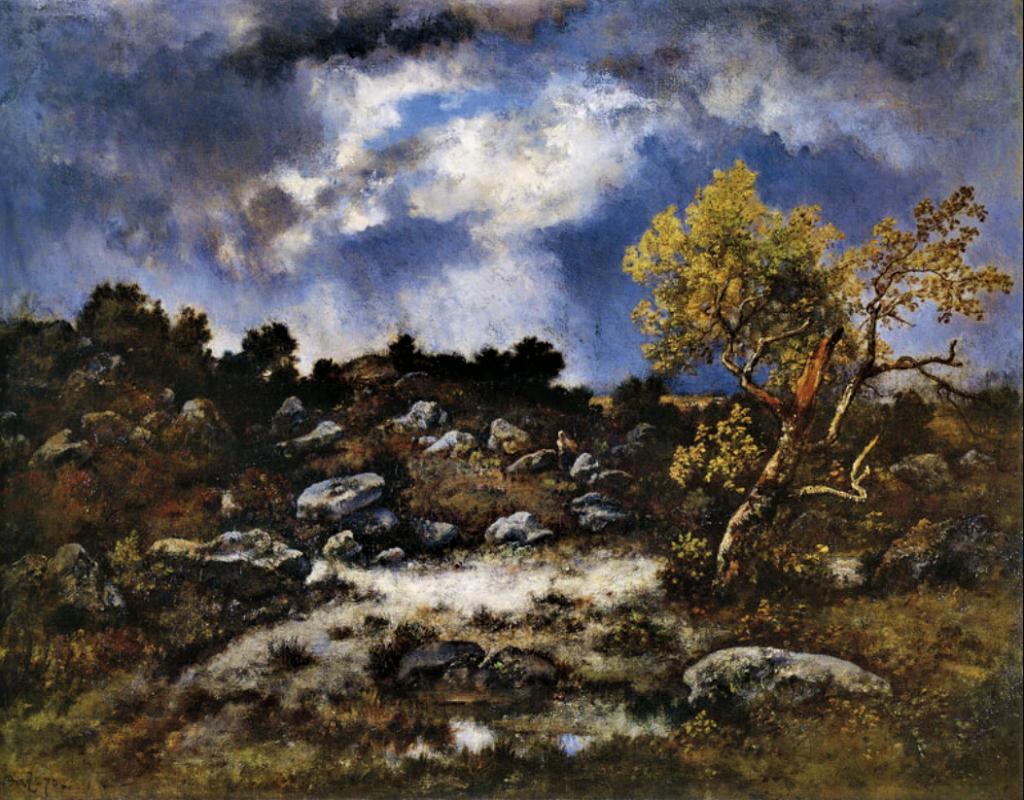For their first Slow Art Day, the Northern Lights Gallery (located in Melfort, Canada, which is north-east Saskatchewan), invited visitors to try slow looking with artworks by five local artists: Linsey Levendal, Monica Daschuk, Al Jardine, Beth Bentz and Jim Mason.
Below are several photos of the artworks, plus information on their slow looking prompts and brochure.
Visitors were given a brochure with some information about the five artworks, and prompts to use for observation and discussion:
- Which artist captured your attention first and why?
- How does _____ (your choice) piece compare with your preferred style of art?
- If you could bring one piece from today home with you, which one would it be and why?
- What medium do you prefer – acrylic, watercolor, ink, pencil…Something else?
- Do you like 2-dimensional or 3-dimensional pieces better?
- When you stop and look at a piece for 5-10 minutes do you think you see things in it you otherwise might not have?
- How much art do you have in your home? What pieces have special meaning?
Families who attended were especially encouraged to discuss how art is an important part of everyday life with their children.
Below is the brochure that the Gallery created:
The event was well received, and there was a steady stream of people during the day. Two of the artists, Al Jardine and Jim Mason, also attended and engaged in discussions with participants.
To view all the art on display at the Gallery, visit their website or Facebook Page.
Sandra Dancey, owner of the Northern Lights Gallery, said that Slow Art Day was really well received, especially now during the pandemic.
“Given the current state of the world I think most people need to know they aren’t alone, and they appreciate the opportunity to look at art and talk with each other”.
Sandra Dancey
At Slow Art Day HQ, we couldn’t agree more.
We believe slow looking provides a great opportunity for people to enjoy art and each other on a deeper level — and experience that we are not alone.
We look forward to seeing what Northern Lights Gallery prepare for their second Slow Art Day in 2022.
Johanna, Jessica, Ashley and Phyl


